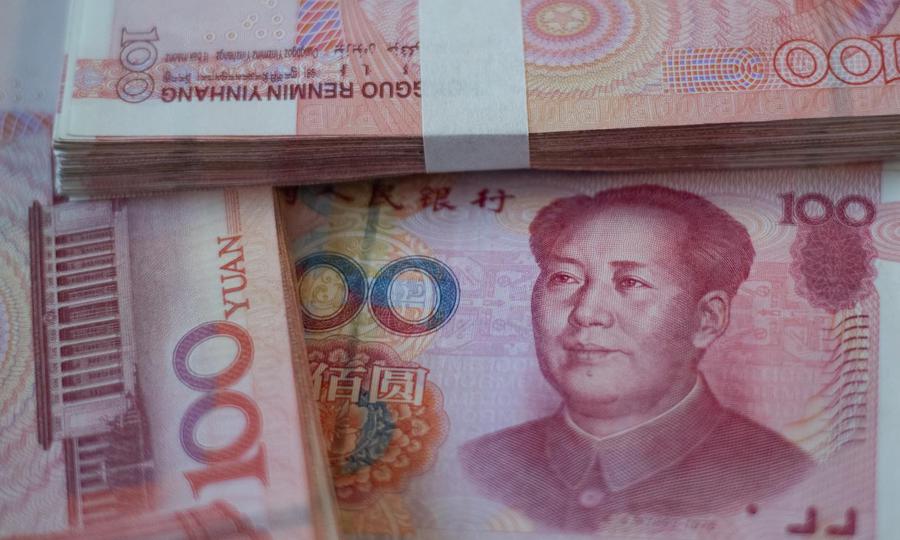What does the People’s Bank of China know that the rest of us don’t?
China bulls have 28 billion reasons to ask. That’s how much, in US dollar terms, the central bank suddenly pumped into markets yesterday. That, just two days ahead of Friday’s release of closely-watched data on GDP, or gross domestic product, in the third quarter.
Economists generally expect a 6.1% rate from a year ago. It would be the slowest pace since 1992. But it might be seen as good news. The reason: yesterday’s huge injection makes you wonder if the data will disappoint markedly. If not the headline number, perhaps signs of grave weakness will in the detail.
Recent events raise the odds, after all, that China won’t make its 6% target this year. Producer prices fell 1.2% year-on-year in September, the worst performance in more than three years. The data raise questions about whether consumer prices, a more widely-tracked inflation measure, will be heading negative too.
China has churned out its fair share of gloomy economic news. Readings on every thing from exports to industrial production to purchasing managers’ orders demonstrate how the global trade war is slamming Xi Jinping’s economy.
The best metrics, though, maybe, coming from places that rely heavily on Chinese demand. Japan, Singapore and South Korea are all skirting recession. This week, Singapore’s central bank slashed interest rates for the first time in three-and-a-half years.
Australia is showing signs of stress, too. Its resource-rich economy is arguably the globe’s biggest leveraged bet on China. After going more than 25 years without a recession, Canberra’s economy is directly in harm’s way.
Optimistic
The International Monetary Fund also predicted this week that Australian growth will average 1.7% in 2019, down from 2.7% last year. That, however, may prove to be optimistic as the IMF braces for a “synchronized slowdown” in global demand.
It goes without saying that China won’t save world growth this time. During the last generalized global stumble after the 2008 global financial crisis, China proved itself to be a growth engine. This time around, not so much, as US President Donald Trump’s tariffs slam Asian supply chains.
Is China’s downshift more precarious than we know? The PBOC’s gargantuan injection suggests it is indeed, whether Xi’s government admits it or not.
It’s in Beijing’s best interest to maintain some deniability. Admitting China is growing in the 5% range might spook markets from New York to Hong Kong. The global selloff would boomerang back China’s way, dampening demand further.
Liquidity
Beijing also needs to prioritize growing better over growing faster. Year after year, the PBOC churns oceans of liquidity into markets, while China opens the fiscal spigot wider, cuts taxes, loosens leverage rules and greenlights local governments to issue more debt. All to achieve some arbitrary growth target each year. It’s what New York hedge fund investor Jim Chanos, of Kynikos Associates, calls China’s “treadmill from hell.”
Bears betting against China haven’t made loads of easy money. And only time will tell if short-sellers like Kyle Bass, of Hayman Capital, are right that Asia’s biggest economy is “beginning to unravel.” At a moment, when Hong Kong protests garner global headlines, Xi can’t afford to let the economy get away from him.
And that also applies to the PBOC. Governor Yi Gang’s team has been quite passive in recent months as the Federal Reserve and other major monetary authorities raced to ease monetary policy. On Wednesday, the Bank of Korea cut borrowing costs to the lowest level in two years. Now, though, Yi’s PBOC is powering up the stimulus machine anew.
China’s credit markets could use some help, of course. As Trump’s tariffs shoulder-check mainland growth, default risks are rising. That goes, too, for dollar-denominated debt should the yuan fall, making overseas IOUs harder to service.
So could China’s economy. The PBOC’s giant cash injection was no technical operation. Odds are, it’s a sign that the inward calm both Yi and Xi are projecting is being overtaken by chaotic events. Friday’s GDP figures may hold some big clues. They’re unlikely to be comforting.
Source:asiatimes.com






























